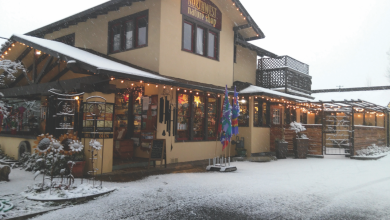Foraging 101
Here in Southern Oregon, we’re fortunate to cohabitate with an array of wild edible and medicinal plants. Local Native traditions stress collecting plants with respect; gathering plants with deference to these traditions is an ethical approach that highlights our shared ecological responsibility and roles as environmental stewards.
Foraging ethics, according to Josephine Grant Peters, a Karuk Native Northern California herbalist and traditional doctor, include the following:
1. Gather plants only from large populations; if there are very few plants in an area, avoid gathering from this site to ensure that the plants will persist in the area.
2. Gather only what you need and nothing more.
3. Only gather common plants and respect rare native plants. Spread out your foraging areas; try not to concentrate all your efforts in one area.
4. Keep an eye out for invasive species and be liberal when harvesting foreign plants! You’re doing your part to keep the ecosystem healthy by eating these tenacious tendrils. Give the Southern Oregon Land Conservancy or The Nature Conservancy a call (our chapter is located in Medford) if you have any questions about invasive plants and if you would like to volunteer to remove plants from local preserves, and public and private landholdings.
5. Make sure you have permission to gather plants in the area you’re in. Respect plants and respect people.
An important note: please make sure that you get a second opinion before you sample; never assume, and always check with a local expert. To find one, contact the Native Plant Society of Oregon, Siskiyou Chapter, (541) 482-7629.
A few native plants you can find in our ecoregion and greater Oregon include the following:
1. Dandelion greens. These are especially tasty before they develop flower heads.
2. Chickweed (all except roots)
3. Clover (all except roots)
4. Miner’s lettuce (a salad staple and common throughout the Rogue Valley)
5. Mustard greens
6. Sow thistle (A pasture plant, found in our agrarian areas. Sauté with butter or oil)
7. Garlic mustard (highly invasive, especially in the Willamette Valley, Oregon)
8. Sorrel (keep your eye out for young rosettes)
9. Henbit
For more information refer to the sourcebook “The Deerholme Foraging Book” by Bill Jones, which provides a profile of relevant plants, best-ecosystem practices, and foraging ethics, and come by the Northwest Nature Shop at 154 Oak Street, Ashland for further resources, wild food foraging literature, plant and wildlife guides, advice, and much more!




